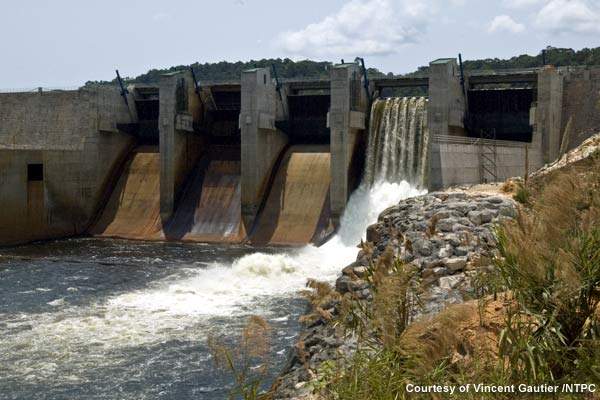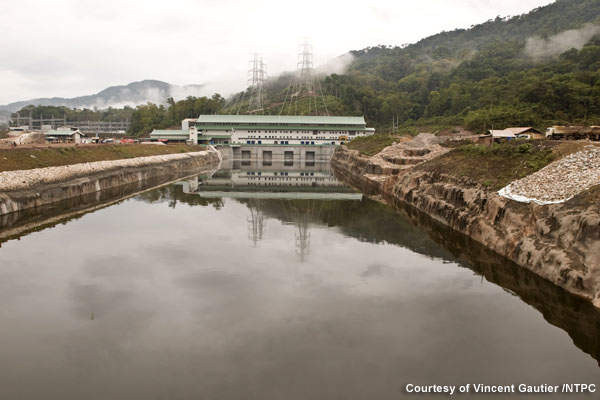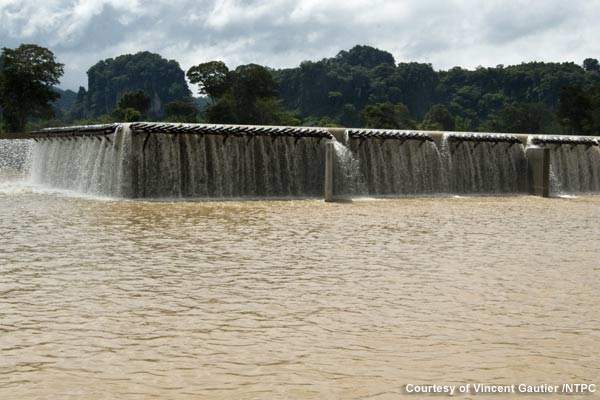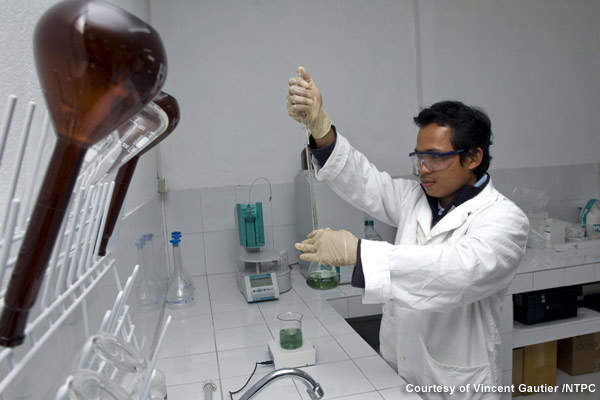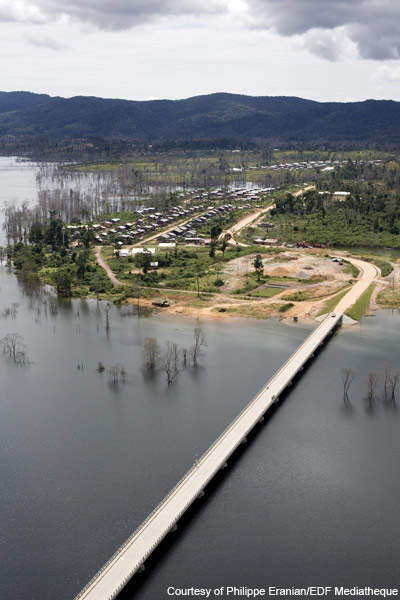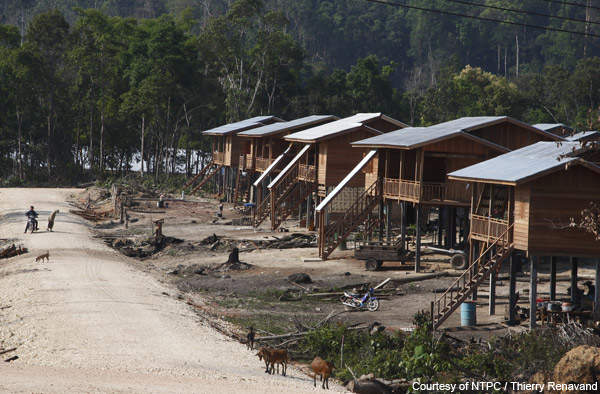The Nam Theun 2 Hydropower Project (NT2) is a trans-basin diversion power plant on the Nam Theun river in Khammouane and Bolikhamxay provinces in Lao People’s Democratic Republic. The $1.3bn project was officially inaugurated in December 2010.
The multi-purpose project was under construction for over a decade. Commercial export of electricity from the plant started in March 2010, but was officially announced only on 30 April 2010.
The trans-basin project diverts water from the Nam Theun river to the Xe Bang Fai river on the downstream to generate electricity. It covers from the Nakai Plateau to the lower Xe Bang Fai River. The project has an installed capacity of 1,070MW. It will generate 6,000GWh of power a year. The project increases the electricity generating capacity of the country by 1.5 times.
A substantial part of the electricity (995MW) generated through this plant is being exported to the Electricity Generating Authority of Thailand (EGAT) as part of a long-term power purchase agreement (PPA) signed in 2003. Under the agreement the Laos Government will earn $80m in the first 25 years. In addition, it will also supply 75MW of electricity to the state-owned Electricite du Laos (EDL).
The Lao Government expects to earn $2bn in 25 years through the project. A part of the revenues are to be spent on the development of the local people.
Operated by Nam Theun 2 Power Company (NTPC), the build-own-operate-transfer (BOOT) project has a concession period of 31 years including a 25-year operating period. At the end of the operating period, the project will be transferred to the Government of Lao.
NTPC is owned by a consortium of Electricite de France International (EdFI) of France (35%), Electricity Generating Public Company (EGCO) of Thailand (25%), Italian Thai Development (ITD) of Thailand (15%) and the Government of Laos (25%).
Nam Theun 2 project
The NT 2 Hydropower project included the development, construction and operation of a trans-basin diversion power plant that comprised a dam, a reservoir, a power plant, a regulating pond and a channel.
A 39m high and 325m long dam was constructed to the northwest of the Nakai plateau across the river Nam Theun to form a reservoir. To the west bank of the reservoir, 13 small earthwork saddle dams are constructed. The 450km² reservoir is 7m deep and covers 40% of the plateau. At full supply, the reservoir can store up to 3,530 million m³. The surface area reduces to 70km² at the end of the dry season. To control the water level in the reservoir during wet season, a spillway and a stilling basin have been constructed.
Water from the reservoir is directed to the intake structure through a 5km long headrace tunnel. There is a 3km long tunnel, a pressure shaft and a pressure tunnel to carry the water from the intake structure to the power station, situated 350m below the plateau in the Nam Kathang valley.
The power station is equipped with four 250MW Francis unit turbines, which can generate 995MW or 5,636GWh of electricity a year. Two 37.5MW turbines powered to generate 75MW or 300GWh of electricity a year have also been installed in the power station. Water from the intake structure passes through these turbines and enters the regulating pond below the powerhouse. Installed with a storage capacity of 8 million m³, the regulating pond releases water into the Xe Bang Fai river through a 27km man-made downstream channel.
The project began generating 1,000MW electricity for commercial purposes on 24 March 2010. It supplies 995MW (5,636GWh) to EGAT and 75MW (300GWh) to EDL in addition to meeting its domestic power demand.
Power grid
In order to supply electricity to EGAT, the plant is connected with transmission lines across the Lao-Thai border. A 138km double-circuit 500kV transmission line connects the power station to Thai border near Savannakhet. It is further connected to the north-east of Thailand through a 160km, 500kV line that connects to a substation in Roi ET.
The other transmission line, that supplies electricity to EDL is a 70km long, 115kV line that connects to Thakhek in south-central Laos. EDL plans to take another 15MW from the power station switchyard through a 22kV transmission line, to provide electricity to resettled villages.
Nam Theun 2 project finance
The project was financed through a mix of debt and equity provided by a public-private partnership. Four multilateral development banks including the World Bank Group ($20m grant to the Lao Government and $130m in guarantees to other financiers to cover political risks), Asian Development Bank ($70m loan and $50m guarantee to cover political risk), Agence Francaise de Development (AFD), European Investment Bank (EIB), Nordic Investment Bank (NIB) have invested in the project.
The other partners were Coface of France, EKN of Sweden and GIEK of Norway, French Development Agency, PROPARCO and Export-Import Bank of Thailand. In addition, international commercial banks including BNP Paribas, Credit Agricole Indosuez, ANZ from Australia, Societe Generale, Fortis Bank, Bank of Tokyo and seven Thai commercial banks have also financed the project.
Local environmental and social impact
The project will release a far smaller volume of green house gases (GHG) than a comparable gas-fired or coal-fired power plant would do over a similar operating period.
The project involved the resettling of 6,200 villagers, who had moved to custom-built new villages by mid 2008. The aim of the project is to increase the standard of living of these villagers by increasing their income following relocation. In order to achieve this, villagers needed to expand their traditional income base. The transition is taking place by focusing on a range of livelihood activities such as agriculture, fisheries, livestock and off-farm activities. Technical assistance is supplied by NTPC and the government.
Project history
The potential of a hydroelectric power plant on the Nam Theun river was first identified in 1927. It was, however, considered for a feasibility study only in 1970s. In the 1980s the Lao government identified Nam Theun 2 Hydroelectric project as a key to its economic and social development. World Bank was invited to participate in the project and later a consortium was formed to research and develop the scheme.
The project moved from the conceptual phase to the development phase in 1994. Following the Asian economic crisis in late 1990s, it took nearly ten years to complete the studies and agreements necessary to begin construction. In 2002, Nam Theun 2 Power Company was formed and construction began in June 2005 following financial closure.

